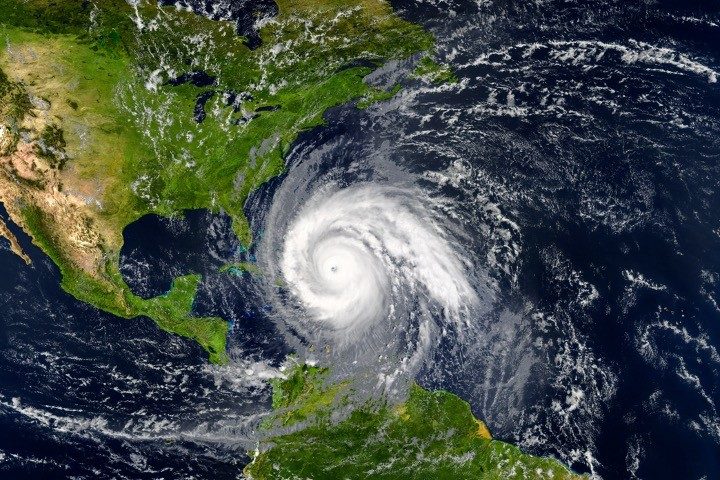
One of the things we’ve been assured is coming due to global warming is an increase in the frequency and severity of hurricanes in the Atlantic Ocean. At least for 2022, we can breathe easily because, despite predictions from the National Oceanic and Atmospheric Administration (NOAA), that hasn’t been the case.
In May, NOAA was predicting a potentially disastrous Atlantic hurricane season:
For the 2022 hurricane season, NOAA is forecasting a likely range of 14 to 21 named storms (winds of 39 mph or higher), of which 6 to 10 could become hurricanes (winds of 74 mph or higher), including 3 to 6 major hurricanes (category 3, 4 or 5; with winds of 111 mph or higher).
NOAA gave the prediction with 70 percent confidence.
But the numbers are in, compiled by Colorado State University, and the 2022 storm season has fallen far short of those dire predictions. Only two hurricanes (Fiona and Ian) could be listed as major hurricanes, as compared to the three to six storms predicted by NOAA.
The 2022 season did reach NOAA’s prediction of 14 to 21 named storms — barely — with 14 named storms, but the Accumulated Cyclone Energy readings for 2022 were at only 78 percent of average when compared to the 30-year period between 1991-2020, and were 60 percent lower than readings from 2016-2021.
So, not only did the 2022 season not produce an astounding number of named storms, but the intensity of those storms was less than 80 percent of average.
None of this stopped NOAA from declaring their failed predictions for 2022 a success, however.
“Forecasters at NOAA’s National Weather Service and its National Hurricane Center issued earlier forecasts with increasing accuracy this season,” said NOAA administrator Rick Spinrad. “These improved forecasts coupled with critical NOAA data and services undoubtedly led to the better protection of life and property.”
Only weather forecasters can be observably wrong in their long-term predictions and still crow about their accuracy.
NOAA blamed their specious prognostication of conditions on “wind shear” and a lack of “atmospheric moisture,” which the agency said were “rare.”
“This unique season was defined by a rare mid-season pause in storms that scientists preliminarily believe was caused by increased wind shear and suppressed atmospheric moisture high over the Atlantic Ocean,” their website stated.
Where did that “increased wind shear” and “suppressed atmospheric moisture” come from? Was that due to climate change too?
Hurricanes are important to the climate hysteria narrative because the images of wind, torrential rains, and destruction are used show the world what will happen should we not bend the knee to climate alarmist prognostications. But the 2022 hitch in the disaster narrative is not the first time that climatistas have been disappointed that there were not enough hurricanes to blame on global warming.
Recall that there was a long pause in major hurricanes hitting the United States from 2005 until 2016. NOAA itself commented on the lack of severe storms.
“I can confirm that as of October 24, 2016, it will be a complete 11 years since a major hurricane has struck the United States, as defined by the Saffir-Simpson Hurricane Wind Scale of being a Category 3 or higher. The current streak of no major hurricane landfalls onto the U.S. mainland remains intact. The last one to do so was Hurricane Wilma on October 24, 2005,” NOAA spokesman Dennis Feltgen told CNS News at the time.
And any perceived increase in hurricanes in the past 60 years is likely a product of increased observational tools. A study from 2021 confirms this thesis.
“Due to changes in observing practices, severe inhomogeneities exist in this database, complicating the assessment of long-term changes. In particular, there has been a substantial increase in monitoring capacity over the past 170 years, so that the probability that a HU (Atlantic Hurricane) is observed is substantially higher in the present than early in the record,” that study states.
Moreover, the study, conducted by Gabriel Vecchi of Princeton; Christopher Landsea of NOAA; Wei Zhang of Utah State; Gabriele Villarini of the University of Iowa; and Thomas Knutson of NOAA, concluded that hurricanes were likely not growing in intensity, as climate hysterics like to claim:
The homogenized basin-wide HU and MH (Major Hurricane) record does not show strong evidence of a century-scale increase in either MH frequency or MH/HU ratio associated with the century-scale, greenhouse-gas-induced warming of the planet.
When the mainstream media give you stories about more hurricanes and increased hurricane intensities, they are feeding you a narrative not supported by facts. They’re not reliably reporting based on data; they’re simply instilling fear.




